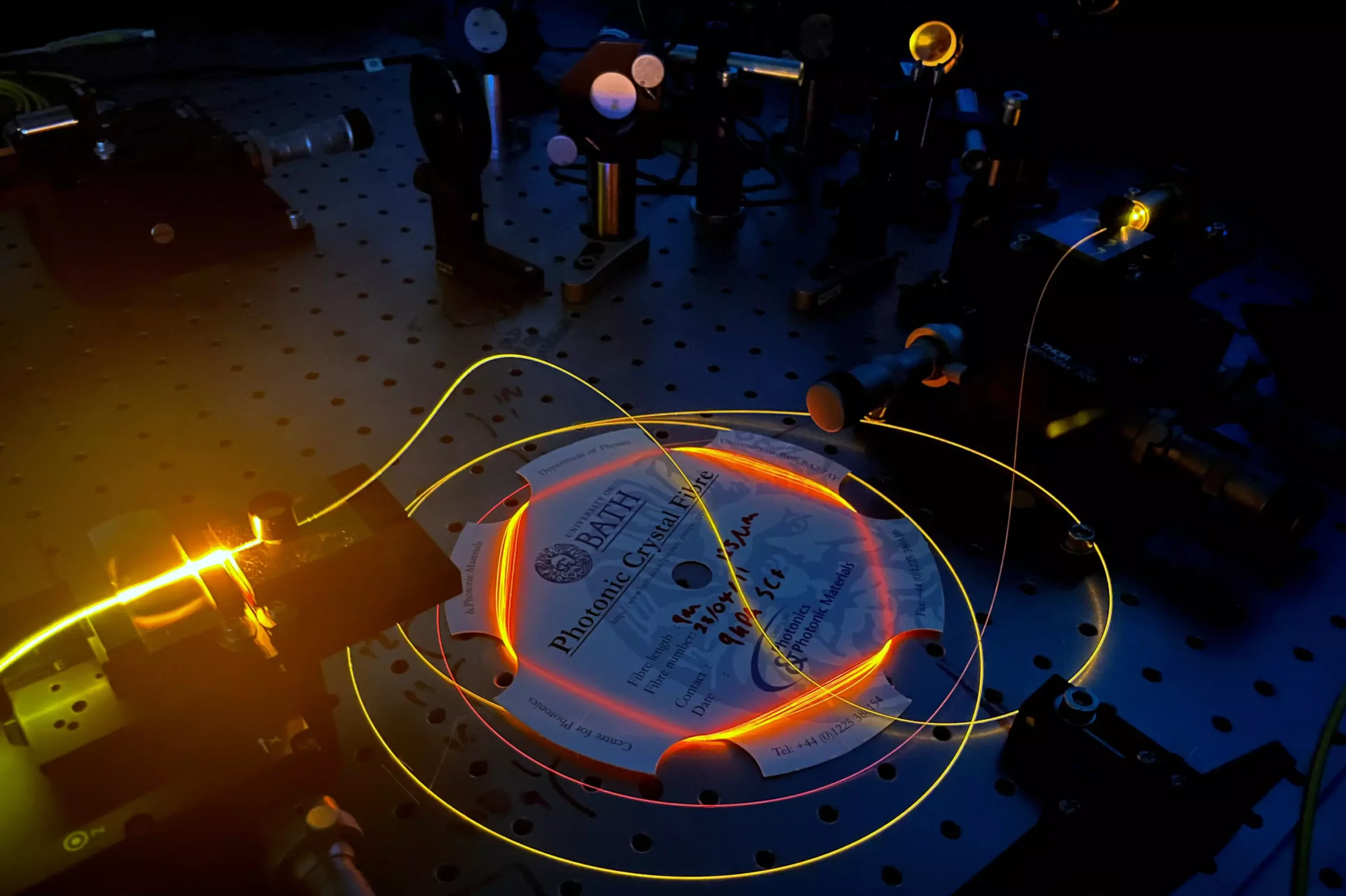The advent of quantum computing is stirring excitement across multiple sectors, promising breakthroughs that can redefine computation, medicine, and secure communication. At the forefront of this technological evolution is a group of physicists from the University of Bath, who have pioneered a new type of specialty optical fibers designed specifically for the unique demands of quantum data transfer. The intricate challenges posed by quantum technologies call for innovative solutions, and these micro-structured optical fibers represent a significant leap toward achieving robust and efficient quantum networks.
The potential of quantum computing is dramatically enhanced by its primary component: light. With its inherent properties, particularly the ability to exist in multiple states simultaneously—thanks to phenomena like quantum entanglement—light offers a vastly superior method for processing and transferring information when compared to classical bits. This unique characteristic means that two entangled photons can influence each other’s states instantly, offering computational capabilities that exceed anything manageable with traditional technology.
Beyond Conventional Optical Fibers
Current fiber optic systems, while effective in telecommunications, utilize solid silica cores that are fundamentally unsuited for the operational demands of quantum computing. Dr. Kristina Rusimova, leading the research at Bath, emphasizes this disparity. Conventional fibers primarily transmit light wavelengths confined by the limitations of silica glass losses. This is a critical restriction; the wavelengths utilized in standard optical fibers simply don’t align with the operational spectra required for applications like single-photon sources or qubits necessary for quantum technologies.
The specialty fibers being engineered at the University of Bath feature a micro-structured core riddled with air pockets, a design that permits the manipulation of light properties more proficiently than traditional methods. These advanced fibers not only facilitate enhanced data transfer capabilities but also play a crucial role in developing and sustaining entangled photon pairs and quantum states conducive to high-fidelity quantum computation. The researchers underline the importance of redefining optical fiber architecture to meet the protocols associated with emerging quantum applications.
Building the Quantum Internet
One of the most ambitious prospects of quantum technology is the establishment of a “quantum internet,” a paradigm shift that would revolutionize how data is transmitted across the globe. Dr. Cameron McGarry indicated that the quantum internet would function similarly to the existing internet but would require drastically different technological underpinnings, particularly with specialized optical fibers designed to carry quantum information over long distances. The unique structure of the Bath fibers, with their intricate air pocket design, positions them as foundational infrastructure for this next frontier of digital communication.
Additionally, the perspective presented by the research team showcases a blend of technical challenges and inventive solutions critical for the scalability of a robust quantum network. This involves the utilization of these specialty fibers not just for basic communication between nodes, but also for embedding quantum processing capabilities within the network itself. Integrating quantum repeaters and other technologies directly into the architecture will enhance the operational range and efficiency of quantum systems.
Multi-Dimensional Applications of Specialty Fibers
The potential uses of these micro-structured fibers extend far beyond simple connectivity. The researchers illustrate how these fibers could be intermediaries for quantum computations: serving as sources for entangled photons, conduits for quantum memory, or even processing switches within a quantum network. The implications are profound—not only could we enable faster communication, but we could fundamentally alter how computations are executed at every node.
The capacity of these fibers to confine light tightly, while also enabling the generation of complex quantum states, lends itself well to numerous applications, including precision measurement; secure communications through novel encryption techniques; and ultimately, creating a resilient quantum infrastructure capable of supporting the rapidly evolving landscape of technology.
The Journey Ahead
While the notion of quantum advantage—a situation where quantum devices outperform conventional computers—remains elusive, the advancements at Bath represent a significant step in that direction. The continual improvement and refinement of specialty optical fibers exemplify how targeted research can address existing technological hurdles and pave the way for future breakthroughs. As insights emerge from the challenges outlined, there’s an intrinsic optimism surrounding the research community, hinting at a promising horizon for quantum technology.
In an age where our reliance on digital information grows exponentially, innovations like those coming out of the University of Bath are integral not only for keeping pace with need but for leading the charge into a transformative quantum era. The vision of a quantum internet is not merely a goal; it is a testament to human ingenuity in the face of technological limitations, and an acknowledgment of the extraordinary potential that lies just beyond the horizon.


Leave a Reply